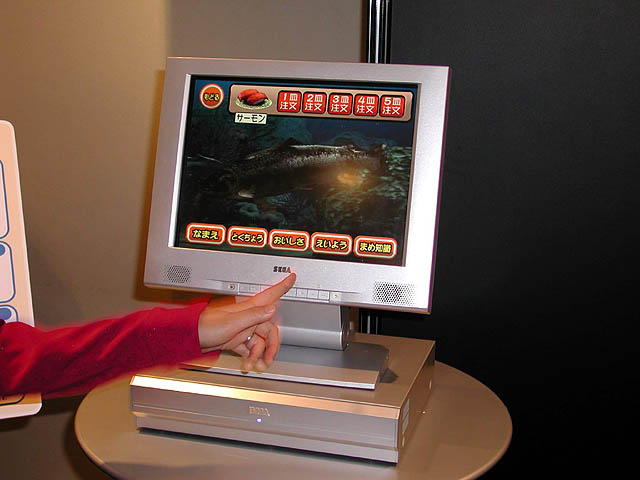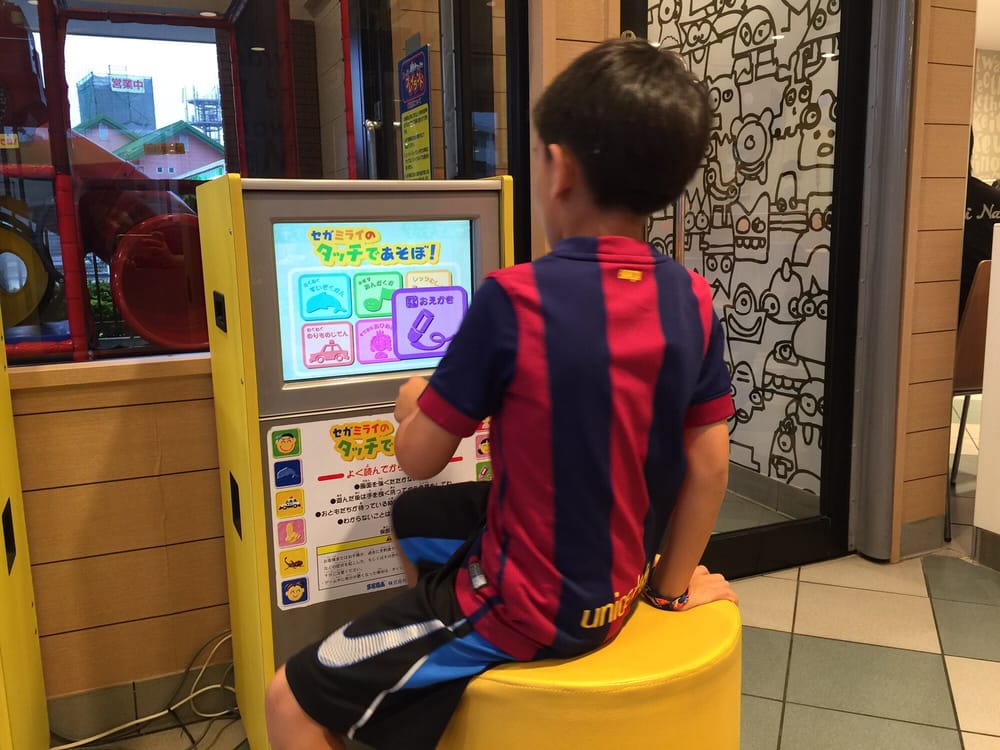The Fish Life’s legacy
After a hushed development and poor sales in Japan, rare Fish Life units can occasionally be bought on eBay for extortionate prices[59]. What happened to this platform?
As a home games console, the Fish Life never became popular, far from it. This might be due to a number of factors, such as the system’s presence at arcade conventions, rather than the more classic trade shows for games consoles; the publicity which described it as a luxury product for professional use; the console’s expensive retail price; a distribution limited to Japan; the concept of the game itself; or Isao Okawa’s announcement that Sega would no longer be developing hardware. We’ll explore some of these possibilities and discuss what remains of the Fish Life’s legacy.
Without going into too much detail about Sega’s strategy at the end of the 1990s and beginning of 2000, the company was not doing well. Bought by CSK Holdings in 1984, the Japanese firm had fallen into severe debt and slowly realises that it can no longer rival its direct competitors – particularly Nintendo, their oldest rival, and the newcomer, Sony. For Sega, large arcade installations in specialised amusement arcades remains one of the company’s most profitable activities, principally in Japan. It is therefore normal that a studio like Sega R&D AM5 is solicited for large-scale projects. However, the Fish Life is a bit of an oddball when it comes to the arcade world, ever since the conception of its predecessor, Aquarena. Payment wasn’t required for the system to work and instead of quick, short games, it was more like a contemplative underwater painting; all of this made Aquarena’s concept the extreme opposite of the typical mechanisms used by arcade machines[78]. In the same way, the Fish Life was described as a deluxe and very expensive Dreamcast that could only be used for a very specific kind of software which is more decorative than fun[16]. Sega’s communication strategy failed during the promotion of the Fish Life at arcade shows as those external to the project didn’t seem to understand what it was or what it was doing there[78]. A fairly risky marketing strategy which might explain, in part, the machine’s muted success.
Similarly, targeting a very specific demographic – a small number of professionals in the restaurant industry, hospitality and aquariums[38] – almost certainly contributed to the public’s disinterest. We will see that this probably “saved” the Fish Life and stopped it from being eternally forgotten in the meanders of history, but from a purely commercial point of view, the little publicity accompanying the system did not help to increase sales numbers. As for the everyday consumer, the Fish Life’s target audience[11], add on top of that the elevated price of 498,000 yen – equivalent to around 4,240 CHF at the time – for a console that can only play one kind of game. It is therefore unsurprising that Sega decided to target professionals as it is difficult to imagine that the wider general public would be interested enough to shell out such a large sum for such an object.
Nevertheless, during the 2000s, this targeting makes the console accessible to the public as, on its release, it is announced that it will be coming to the Kura chain of sushi restaurants[31]. The restaurant chain worked collaboratively with Sega to develop branches in which clients would be able to use a modified Fish Life to order sushi directly from the console’s screen by touching the different fish[71]. The system called タッチでポン (Touch with Pon!)[66] was installed in February 2001 in the Kura restaurant in the Senboku district of the Osaka Prefecture for the sum of 25 million yen[71], approximately 212,950 Swiss francs at the time. According to Sega, this strategy blends the fun, educational and commercial aspects of the Fish Life system, giving the customers the opportunity to learn about the fish they’re eating[13]. Using the Fish Life in such a way in a professional environment forced the development studio to update the software by adding new marine creatures, such as octopuses and molluscs[16], as well as maintaining the system over several years[24]. Today, the Fish Life material has been replaced by iPads. Similarly, the restaurant Fish On Chips, which was the inspiration for the Fish Life’s launch, upgraded its equipment around 2010[79,80].

Staying with the restaurant industry, the Fish Life was also installed in Japanese branches of McDonald’s in 2001 with the introduction of マクドナルドのタッチであそぼ! (Let’s play with McDonald’s touch!). This time, it isn’t used for ordering food. The fast-food chain is instead targeting children under 10 years old by focusing on the Fish Life’s fun aspects as a way of entertaining a younger audience[51,52]. The installations are based on the Fish Life hardware, but do not use the system’s original software range. A different software base is used composed of six mini-games where you can become a police car, or an insect in nature[72,73,74]. Just like the ordering system used by the chain Kura, the McDonald’s installations based on Fish Life hardware were in use for several years. 🐟
